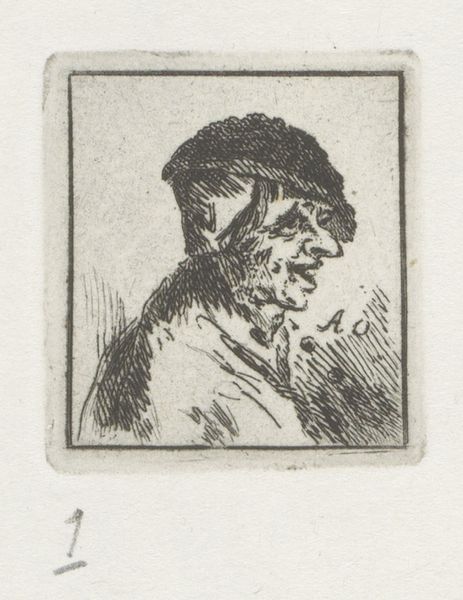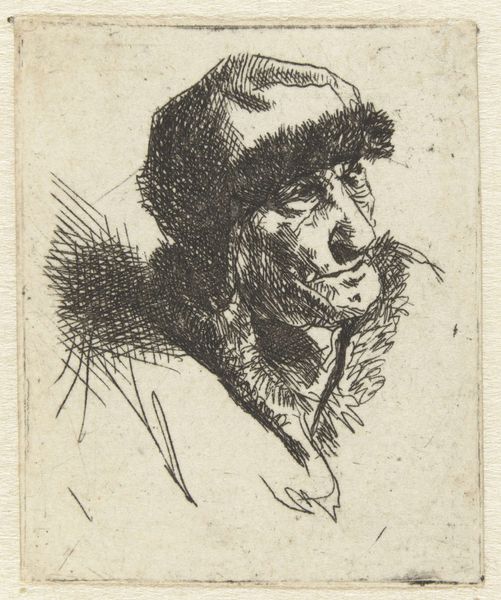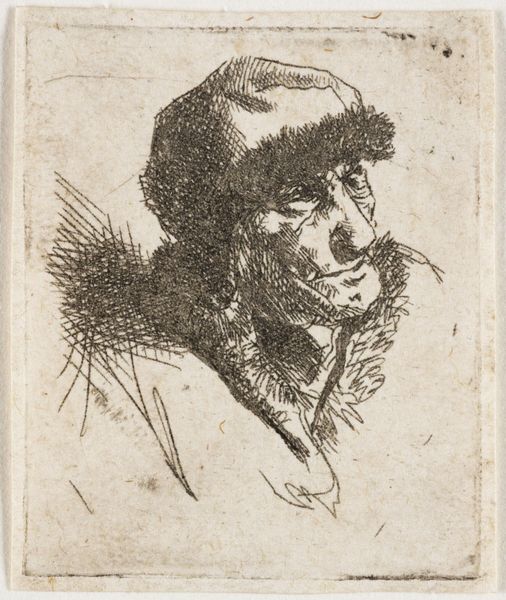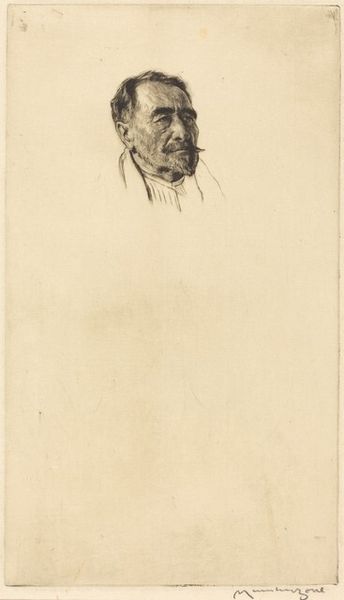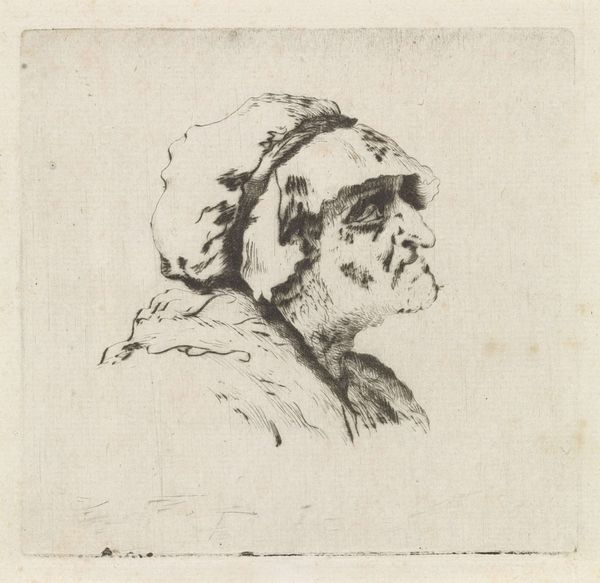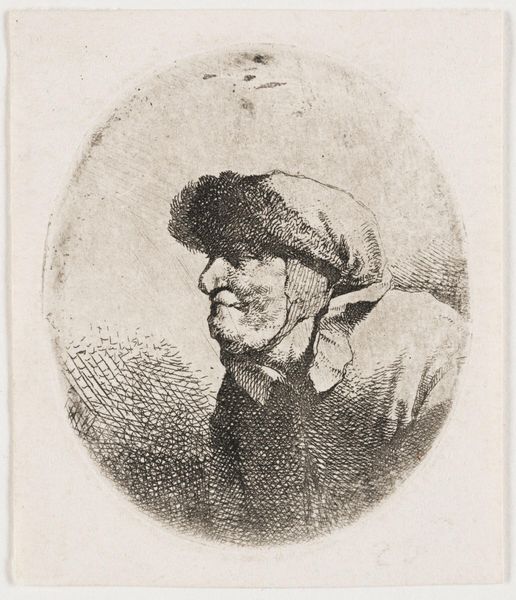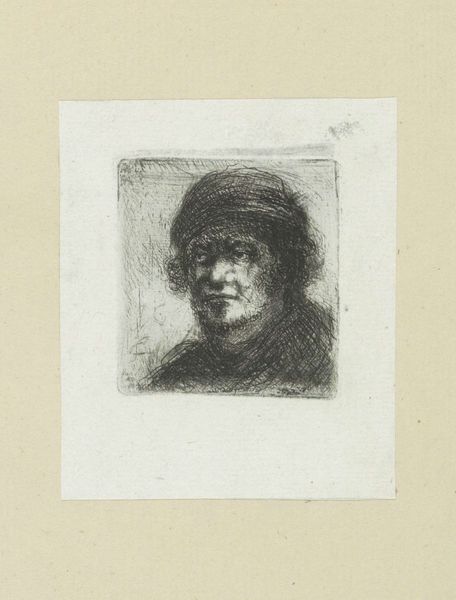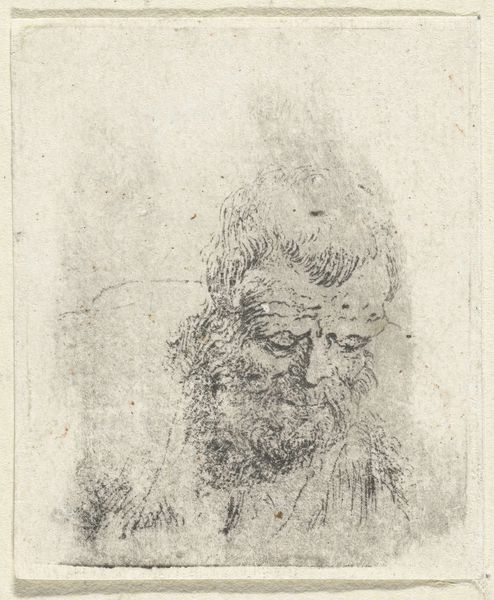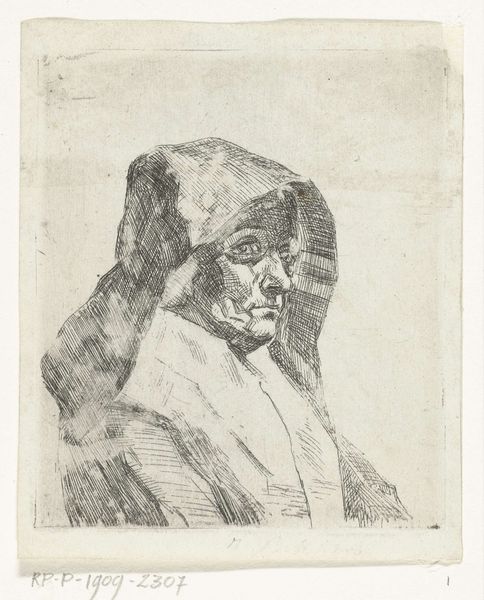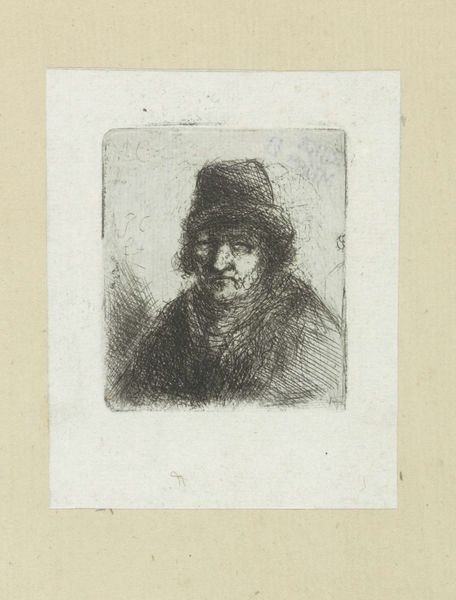
print, etching
#
baroque
# print
#
etching
#
genre-painting
#
realism
Dimensions: height 34 mm, width 29 mm
Copyright: Rijks Museum: Open Domain
Editor: So, this is Adriaen van Ostade's "Buste van een lachende boer" or "Bust of a Laughing Farmer," an etching from around 1650 to 1652. It's currently at the Rijksmuseum. What strikes me is how intimate and almost... vulnerable this portrait feels, despite its subject matter. How do you interpret this work? Curator: The laughter of the farmer, seemingly straightforward, actually becomes a lens through which we can examine societal hierarchies of the Dutch Golden Age. Ostade, while achieving popularity through these genre scenes, simultaneously perpetuates and perhaps subtly critiques the romanticized view of peasant life often consumed by the bourgeoisie. Where does genuine empathy end and class-based spectacle begin, do you think? Editor: That’s a great question! It feels exploitative to flatten someone to a stereotype but is that what Ostade is doing? Curator: Well, consider this: humor directed downwards, towards a perceived lower class, often serves to reinforce existing power structures. Is the laughter *with* him, or *at* him? Analyzing the formal elements—the sketchy lines, the almost caricature-like exaggeration of features—informs this too. Does the rendering dehumanize him, or grant him character? Editor: I see what you mean. I guess it depends on whether the detail emphasizes his humanity or reduces him to an archetype. Maybe it's both at once? Curator: Precisely. These tensions are exactly what make the work so compelling and historically relevant. By probing the artist's choices, we confront broader questions about representation, class, and the gaze. The role of the viewer cannot be ignored when we think about whose laughter gets amplified, and whose is silenced. Editor: I never would have thought about it that way. There’s so much more depth here than initially meets the eye! Curator: That's the power of art: to reflect and refract the complexities of its time, challenging us to confront uncomfortable truths about ourselves and society.
Comments
No comments
Be the first to comment and join the conversation on the ultimate creative platform.

